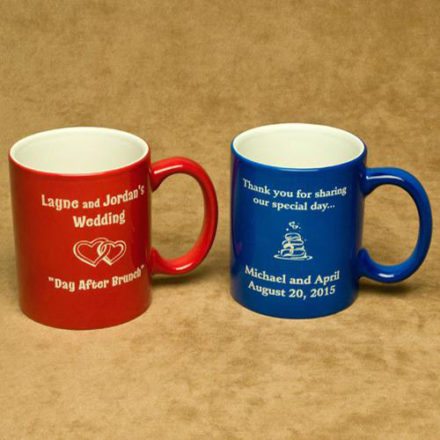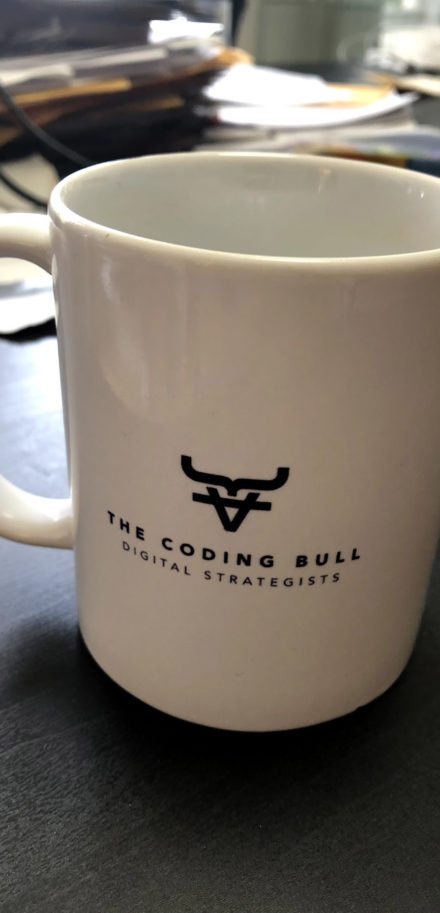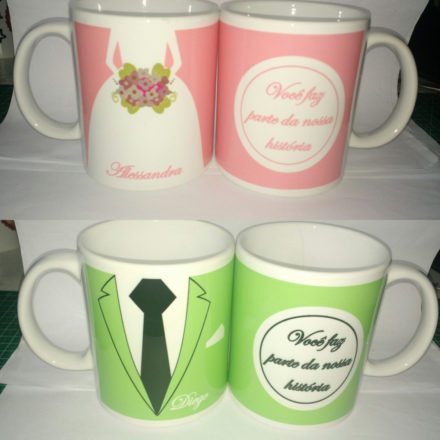RECENT Custom Coffee Mugs WORK
It’s a fact: custom coffee mugs are the best way to make a lasting, positive impression. We’ve printed thousands of custom coffee mugs for businesses to give away!
PAST CUSTOM Coffee Mugs CLIENTS
TESTIMONIALS
No matter the season or occasion, Action is ready to help you with all your custom coffee mugs needs
Screenprinting
Established in 1974, we were one of the first screen printing shops in British Columbia. Today, we run a fully operational facility in the Olympic Village area of Vancouver, catering to large and small businesses, local bands, festivals, and non-profits.
Art SOlutions
Working with a designer? Have a complicated logo? Don’t even have a logo? No problem. Our art department is here to help you prepare your artwork for the most cost-effective print possible. We’ll speak directly with your artist to get the proper files and resolution needed, or we’ll help you create your art in the ideal format.
Fast Turn Around
FAQ - How to order custom coffee mugs
At Action, we know that every time you invest in promoting your business, you’re going to have questions. That’s why we’ve put together a comprehensive FAQ to help you create the perfect merchandise for your needs.
If you’re looking for art requirements or just a little more information about our production process, this page should cover many of the basic questions you’ll have before starting your order. We recommend all potential customers browse this guide before they order custom products to familiarize themselves with the ordering process. If you are working with a graphic designer, whether on your staff or contracted, we highly suggest sending them a link to this section so they can take note of our art requirements. With any kind of printing, investigating the art requirements can often save you time and money! And if you have a more specific question about how to order custom products, we’re happy to help you!
Don’t see what you need?
Please contact us so we can help you order custom products one-on-one.
- The type of shirt you’d like to print on, sizes and quantity
- Your artwork and where you’d like the design to printed on the shirt
- Your due date
- A 50% deposit before production and the remaining 50% before shipping or pick up
- We send you a custom quote and a mock up with your artwork
- Any revisions to artwork or placement you may require
- Once you’ve approved your mock up, we separate your artwork and send it to our Production Department
- Your screens are created and inks are mixed
- The shirts arrive from the supplier to our shop and are counted
- We print your shirts, count them again, and pack them up!
Once we’ve received your artwork, we can give you a custom quote for your project. You can also use our quote generator to get a general idea of how much your merchandise will cost you if you use some of our most popular shirts.
The mock up you will receive with your quote will break down the number of ink colours you need and the size of your print. If you’d like to change an ink colour or the size of your print, you can! We’ll send you a revised mock up with any changes you’d like.
Once you’re happy with how your shirts will look, our graphic designer splits your image up to prepare it for going on a screen. When the screens are ready and the ink is mixed, all we need is your goods to arrive so we can print them!
Generally, it takes up to 10 business days to print your order from the day of approval. If you need your goods sooner, however, we can usually work something out. If you need your shirts immediately, rush charges will apply.
We deliver within Vancouver and use UPS and Canada Post to mail your goods to you. Shipping charges and times should be discussed with your salesperson as they vary from order to order.
- Screen printing
- Sublimation
- Direct-to-Garment digital printing
- Embroidery
While we do offer sublimation and Direct-to-Garment digital printing, these methods are used very rarely. Sublimation can be a very expensive procedure and is not as environmentally friendly as screen printing. Direct-to-Garment digital printing may be able to print thousands of colours but it is also not cost effective for our customers and not as consistent as screen printing. In rare occasions, however, sublimation and Direct-to-Garment digital printing may be more desirable depending on your project.
When printing promotional products, the printing methods available vary from item to item.
- Dropbox
- WeTransfer
- In person on a USB Memory Stick
Really, any file transfer site will work just fine.
If your artwork is physical, we’re happy to scan in it!
- Vector (.ai or .pdf)
- Photoshop file (.psd) of 300 dpi at print size or larger
- High resolution JPEG of 300 dpi at print size or larger
Vector artwork is always the best option for screen printing, especially for simple images like logos or text. If you don’t have access to vector artwork, a high resolution JPEG or Photoshop file would be excellent.
In some cases, particularly for logos, vector is truly the best option for printing. Our Art Department may decide to recreate your artwork as a vector image, which may have a small additional charge. In the end, we want you to have the best possible print you can!
We love collaborating with our customers on artwork! Our designer can help you create the perfect shirt graphic for your brand. Custom artwork is an additional cost, however, and in some cases can be quite costly depending on the time.
Additionally, our graphic designer is available to give you advice on how to better design your graphic for cost effective, yet awesome, t-shirts.
Absolutely! If it’s easier for you, we’re more than happy to have our Art Department speak directly to the designer you’re working with.
We regularly use UPS and Canada Post to ship our goods. Shipping cost and times vary from project to project, and your sales representative will help you choose the best option for your needs.
We deliver most of our local orders ourselves! You’re also welcome to come to our showroom and pick up your order!
Screen printing orders have a mandatory 50% deposit, including tax.
We accept credit card payments in person, online or over the phone. Cash or debit transactions can be performed in-store. Interac e-transfers and Paypal transactions are also acceptable.
You can get samples made, but generally this is for very large orders (1000 or more shirts) and as there is quite a bit of work involved in preparing samples, they aren’t exactly cost effective for smaller runs.
You will, however, receive a digital proof of your artwork and placement at the size it will be printed and with the ink colours we will use.
We offer proofs free of charge because we want you to be happy with your order and confident that your shirts will look amazing!
Screen printing, or silk screening, is the most cost effective way to reproduce an image onto a garment. It is also one of the oldest forms of printing, with it’s roots stretching as far back as the Song Dynasty of China (960 – 1279 CE). Although it has a rich and practical history, screen printing exploded into a mainstream production method in the 1950s and 60s, when Andy Warhol and other artists began mass producing pop-culture images and using screen printing as an artistic medium. Once logos and branded images started to appear on clothing, along with t-shirts taking over casual fashion, many businesses and artists began printing their custom images for the obvious benefits of free marketing.
Today, screen printed t-shirts are the most popular clothing item world wide, with printing shops ranging from small home-run manual presses to large production facilities like our Vancouver location.
As you can tell, we really love screen printing.
Essentially, screen printing is similar to stencilling – an image is separated by colour and each colour is put onto a mesh screen using emulsion and light.
Emulsion is a thick, gooey fluid that the mesh screen is coated in. After air drying the coated screen, the separated ‘stencil’, which is printed onto a transparent film, is taped to the screen before exposing it to a concentration of light. The light hardens the emulsion everywhere except where the stencil is. Using a pressurized nozzle, water is sprayed onto the emulsion to clear the area where the stencil is.
At this point, you have a stencil. Your screen is then put onto a press and lined up to any other colours you may be printing. Ink is put into the screen, and squeegee is pulled over the image, pushing the ink through the stencil onto a shirt. This process of pushing the ink through the screen is repeated for each colour, using a flash of heat between colours to cure the ink. Once the final ink colour is on the shirt, the shirt is removed and sent through a long, heated dryer to completely cure the ink and make sure your print lasts as long as possible!
The cost of screen printing is different for every project. Several things can affect cost, including but not limited to the amount of colours you use, the style and brand of garments you want to print on, and the print size and the ink type.
The most important factor in the cost of your screen printing project is your colour count. A colour count is the number of ink colours you require to print your image – for every colour, a new screen has to be made, new ink must be mixed, and additional preparation and set up time must be taken.
Additionally, the size of your order will affect your price. As with most goods, the more items you print, the less costly each piece is.
Contact us for a custom quote!
Plastisol, discharge, water base, metallic, puff, glow-in-the-dark… we have a wide variety of ink types to suit every project. It is important to remember, however, that specialty inks are an additional cost.
Contact us for more information about our specialty inks!
Yep! This is called a “Colour Way”. Mixing colour ways will be an additional charge, depending on the number inks you’d like to switch and the type of ink you are using, but we do this all the time.
- Fibre content and percentage found in garment
- Bilingual information (Canada)
We consult the Canadian rules and regulations for garment labelling, which can be found here: www.competitionbureau.gc.ca/eic/site/cb-bc.nsf/eng/01249.html
Additionally, you may want to include the following on your neck labels:
- Fibre trademarks or descriptive terms
- The size of the garment
- Care information
- Your branding and contact information




















